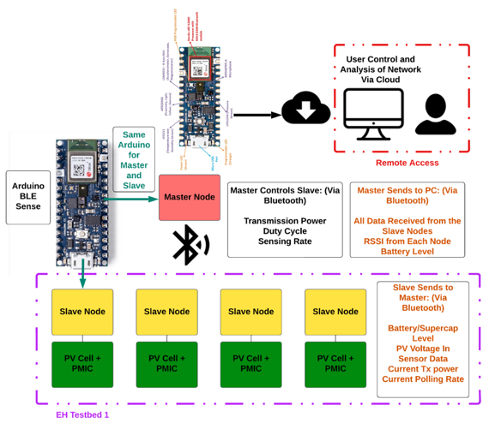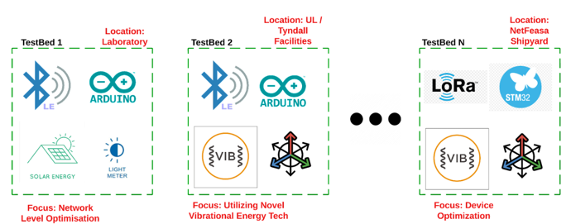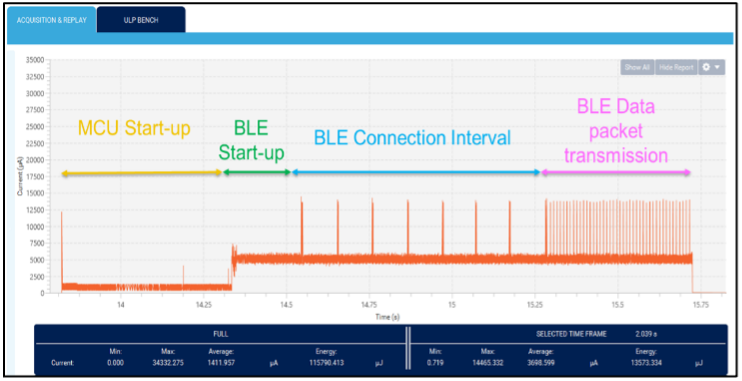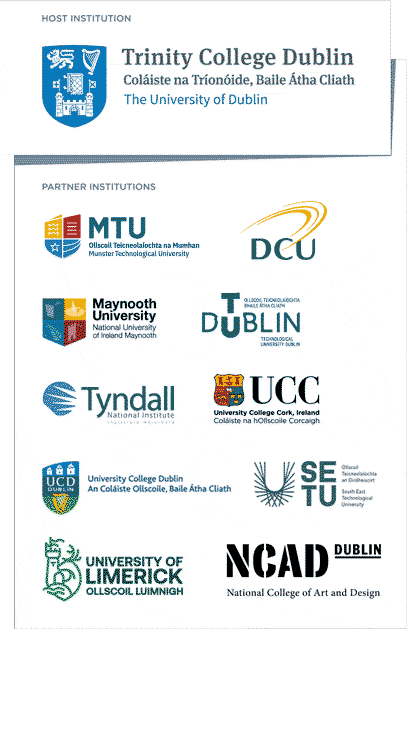
CONNECT Centre researchers at Tyndall National Institute have introduces EnTICe, the world’s first energy harvesting testbed designed for wireless sensor network (WSN) low-power IoT edge nodes and networks. This innovative platform addresses the pressing issue of limited energy resources at both node and network levels, enabling real-life solutions that minimise battery dependence and alleviate cumulative grid load.
EnTICE (Energy harvesting Testbed for Integrated and Connected eSiPs) is the world’s 1st known energy harvesting testbed for WSN low power IoT edge nodes and networks.
Driven by the opportunity to retrofit wireless sensors on, in or near people, equipment and infrastructure. Sensors can capture information for applications such as condition monitoring, asset tracking, energy efficiency optimisation and environmental monitoring.
Specifically it address the real-life problem that there is FINITE energy resources at node (battery) & network (cumulative load on grid) resulting in battery life issues (node level) and cumulative energy gird loading (network level).

EnTICe enables stakeholders to collaborate to minimise the power needed (sense, process, communicate) and maximise use of ambient energies.
One compelling feature is that is that it transcends traditional project boundaries (in terms of scope, timeline, partners, access) so that multiple projects, initiatives and stakeholders can access the testbed over an extended period. It also fosters leveraging of outputs form any given tested to future ones. It fosters internal and external multidisciplinary stakeholder collaboration – developers, suppliers, integrators, installers, end users.
EnTICe offers a continuum of easy to access experimental platforms.
What does it comprise of?
- Use Commercial Off The Shelf (COTS) Parts (e.g. Arduino, STM) combined to create WSN Networks
- Harvesting Node – Solar, Vibrational, Thermal
- Power Management IC
- Microprocessor and Sensors
- Wireless Comms Technology (e.g. BLE, LoRA)
- Can configure Multiple Peripheral Nodes (20+) reporting to and controlled by Master
- Master and Peripherals can be controlled Via cloud so other partners can access the testbed remotely and conduct experiments

What is its potential?
Balance Energy, computational & communication resources, e.g.
- Localization of the IoT devices: Position nodes and Gateways to cover a larger area, fire with lower signal strength while avoiding interference
- Transmit Power of each device: Optimize based on location, link quality between device & Gateway
- Power source optimization: How devices trade among each other, draw power from multiple sources, battery & harvested
- Remaining battery life: Optimum power at which each device fires signal based on battery life left
- Resource optimization: How to optimally use & configure considering the battery life
- Sleep Cycle: Adjust sleep/wake up cycles depending on application, network traffic & battery life

Develop energy constraint algorithms, e.g.
- Prediction of energy harvested in the next period of interest, based on historical data
- Temporal and spatial correlation between sensor readings to adjust sleep cycle of individual sensors
- Examine age & trends of the information in the system to adjust sleep cycle of individual sensors.
Remote Control of Sensor Nodes
The testbed allows remote access to users who are not familiar with Programming and deploying wireless sensor nodes to change variables. For example, an expert in Photovoltaic cells with no experience in sensor devices can perform experiments by varying things like sleep interval or turning on and off sensors on the device with simple buttons on an easily accessible online user interface.
What is an eSiP?
An eSiP comprises various energy harvesting, storage and power management devices/circuits all system integrated into a device that either replaces the function of a battery or extends its lifetime. Led by Tyndall, this has been developed to foster collaborations between stakeholders and drive TRL progression of energy harvesting powered solutions.
We offer the ability to add energy harvesting, storage and power management circuits (discrete and silicon)
- Embed integration technologies such as PCBs, substrates, micro-transfer printing, magnetics
- WSN power consumption, energy harvesting based battery life optimisation suite and testbed
- Tools and expertise to optimise WSN power for various applications.
It can be used in to do real-life experiments to optimise power consumption and work around energy constraints at node and network level.
The idea is to create a series of eSiP concepts for various applications, mixing and matching COTS & emerging technologies. These, in turn, are integrated into energy harvesting powered WSN platforms.
Supporting WSN battery life simulation tool
Based on CONNECT Research Ireland Centre for Future Networks and Communications affiliated EU funded project Energy ECS & LoLiPoP-IoT, this simulation tool comprises IoT sensors, energy harvesting and energy storage components. The combined system will comprise a GUI interface for designing customised WSN nodes by picking and choosing characterized WSN components from a library of parts (sensors, MCUs, communication devices, PMICs, energy harvesting and storage devices).
It enables researchers to study, test, and optimize at device and WSN node level, existing state-of-the-art sensing devices, energy harvesting, storage, and wireless communication-based components before physically implementing them in real-world situations. This will critically help in optimizing,their energy and carbon footprint, particularly where energy availability is constrained (battery or available network power). For system integrators it enables them to optimize the sizing of energy harvesting (e.g. PV panels) & storage devices (primary and ambient energies) to deliver power autonomy for a given application. Research is underway to refine the tool operations such that the various WSN node functionalities as shown below can be embedded into the model and system level impact understood.
To find out more contact eoin.ahern@tyndall.ie
CONNECT is the world leading Science Foundation Ireland Research Centre for Future Networks and Communications. CONNECT is funded under the Science Foundation Ireland Research Centres Programme and is co-funded under the European Regional Development Fund. We engage with over 35 companies including large multinationals, SMEs and start-ups. CONNECT brings together world-class expertise from ten Irish academic institutes to create a one-stop-shop for telecommunications research, development and innovation.
ArticlesHomepage FeatureIn FocusLatest News






